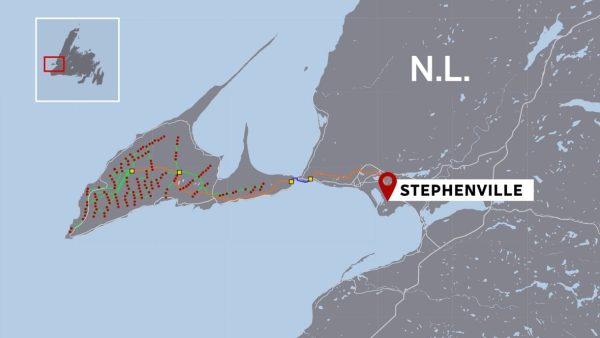| Wind Watch is a registered educational charity, founded in 2005. |
Tensions high on Port au Port Peninsula over wind-hydrogen megaproject
Credit: Patrick Butler · CBC News · Posted: Dec 22, 2022 · cbc.ca ~~
1st phase proposes 164 wind turbines in area the size of the City of St. John’s.
Depending on who you talk to on the Port au Port Peninsula, the region is either on the brink of an economic transformation or walking an environmental tightrope.
Forty-five per cent of residents in the area drew employment insurance in 2019. But a company formed just a few months ago, World Energy GH2, promises a revolutionary wind-hydrogen project it says will bring hundreds of jobs and millions in revenue.
The hiccup? That plan depends on building 164 turbines, each 200 metres tall, in an area about the size of the City of St. John’s.
The project’s staunchest defenders say the area’s population will explode when the project gets off the ground. Its fiercest critics say constructing turbines and kilometres of new access roads will change the face of the peninsula.
Experts also question the megaproject’s viability. Pegged at US$12 billion, it would be the first of its kind in Canada, generating more energy than the Muskrat Falls hydroelectric dam to power a state-of-the-art hydrogen and ammonia production facility in Stephenville, a few kilometres east of the Port au Port Peninsula.
“The peninsula is too small for a project this big. Pure and simple,” said Jos Benoît, sitting in his workshop in Cape St. George, where there’s no denying the wind blows hard – and often. Project proponents say the peninsula has among the best winds for energy production in North America.
But Benoît said he’s worried about the unintended consequences of building dozens of towers and tens of kilometres of access roads – on local hunting grounds, bird and plant life, and the area’s fresh water.
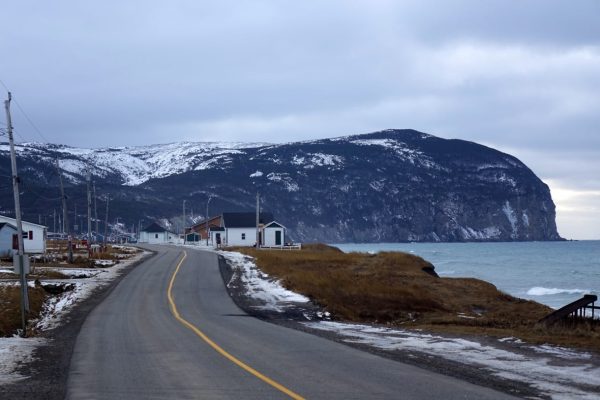
The town of Mainland, on the Port au Port Peninsula in western Newfoundland. (Patrick Butler/Radio-Canada)
In late November, photos of turbid water gushing in the ocean from Cointre’s Brook, the backup water source for the community of Mainland, appeared on social media after World Energy cleared several acres of Crown land for environmental studies.
A spokesperson for the company said runoff from the area entered the brook after significant rains but fencing and dams had been installed and the brook is now running clear.
“We’re listening,” said John Risley, one of the project’s directors, in a recent interview. Risley, a billionaire and former Clearwater Seafoods owner, has repeatedly promised a “reasonable,” “open” and “transparent” approach to local concerns.
“We will inevitably have to move some turbines as a consequence of the environmental studies we are doing,” said Risley.
According to World Energy, at least a kilometre will separate the wind turbines from homes on the peninsula. A series of impact assessments regarding local ecosystems and noise must also be completed before the project gets off the ground.
Those assessments will take until at least next fall, according to a company spokesperson, meaning final government approval of the project is still months away. But several residents with concerns about the project say they’ve already lost faith in the process.
Prime Minister Justin Trudeau and German Chancellor Olaf Scholz travelled to Stephenville and met with Risley and other directors in August, just a few weeks after World Energy’s plans were made public. The company is also already recruiting for a new technician training program in Stephenville.
“It seems to me that we’d reached a foregone conclusion before anyone came and saw the impacts on the local people,” Benoît said. “It’s what you call putting the cart before the horse.”
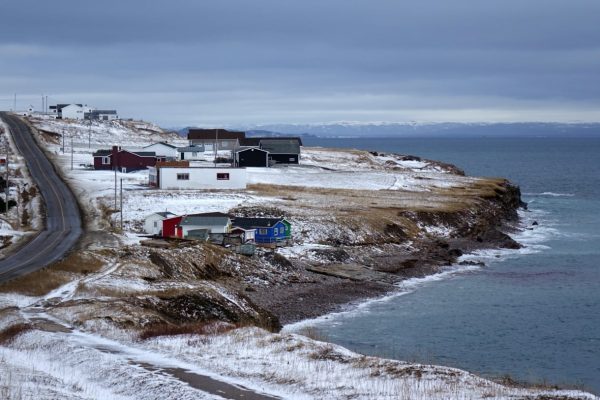
About 4,500 people live in the Felix Cove area of the Port au Port Peninsula. (Patrick Butler/Radio-Canada)
Bigger than Muskrat Falls
The 164 turbines proposed for the Port au Port Peninsula are just the beginning, according to the company. Two other phases of a similar size are also planned in the Lewis Hills and in the Flat Bay area, to the northeast and to the south of the peninsula. They have not yet been submitted for environmental assessment.
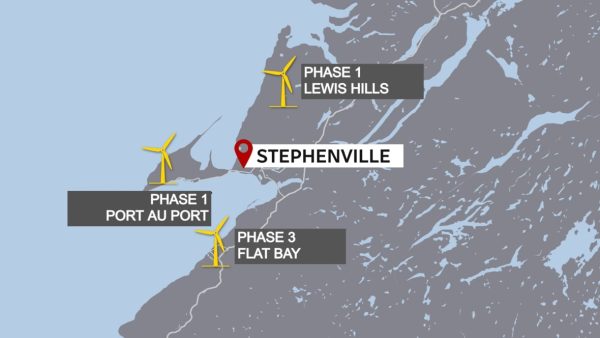
The first phase of the World Energy GH2 project, 164 wind turbines on the Port au Port Peninsula, is the only one currently subjected to environemental review. The company says it is also planning two other phases of a similar size in the Lewis Hills and the Flat Bay area. (Kristel Mallet/Radio-Canada)
All told, about 500 wind turbines could go up, producing three gigawatts of electricity, more than three times the capacity of at the Muskrat Falls hydroelectric dam in Labrador.
That wind energy would be used to power a series of electrolyzers at a plant in Stephenville, where World Energy plans to separate hydrogen from water molecules, then convert the hydrogen into ammonia, which is denser and easier to transport by ship.
Some workers will be necessary to maintain the turbines on the peninsula, but most of the 300 permanent jobs promised by the company will be based at the plant in Stephenville.
“Stephenville has no skin in the game. They’ve got nothing to sacrifice, everything to gain,” said Duran Felix, a member of the Environmental Transparency Committee, a vocal group of residents fighting the project.
Felix said he’s skeptical that the 1,800 direct jobs promised during the project’s construction will go to people on the peninsula, even if World Energy promises to recruit locals and pay for their training.
Opposition overblown?
World Energy also promises a $3.33-million “vibrancy fund” for the peninsula during the first three years of construction. How the funds will be distributed among the communities, most of which aren’t incorporated municipalities and have no employees, isn’t yet clear.
Once the project is up and running, the company says, it will also pay the peninsula whatever tax revenues it pays the Town of Stephenville.
Despite those promises, Felix’s group says 84 per cent of residents are against the project. Committee volunteers went door to door polling the population in October.
World Energy has called into question the impartiality of those results. It offers its own numbers: a survey by MQO Research that shows 80 per cent of people in western Newfoundland support land-based wind energy.
“I don’t trust any numbers I’ve seen, I can tell you,” said Jasen Benwah, the chief of the Benoit First Nation, who supports the project but also understands residents’ skepticism.
“If they [World Energy] misstep we need to let them know they misstepped,” Benwah said. But it’s not every day someone comes knocking with a $12-billion opportunity, he added.
“After construction is over … I think it’s going to be no more than power lines and cell towers. When it’s done, people won’t give [the turbines] a second thought. I mean, it’s a kilometre away from your house. It’s not close.”
Stephenville’s mayor says he and his town are “100 per cent behind this project.”
“We are unanimous within our council,” said Tom Rose, who believes World Energy will make Stephenville Newfoundland’s fourth city, after decades of economic decline.
Political relationships questioned
According to the provincial government, 31 companies have shown interest in building 73 wind projects in Newfoundland and Labrador. But World Energy’s project is the only one currently subject to environmental review and therefore the only one whose details have been made public.
Since those details were released, the project has made headlines not only because of its size, but also due to the close relationship between two of the project’s directors, John Risley and Brendan Paddick, and Newfoundland and Labrador Premier Andrew Furey.
Furey has previously called Paddick, a telecom exec, his “best friend.” The Liberal premier also holidayed at Risley’s fishing lodge less than a year before announcing an end to a long-standing moratorium on onshore wind development. (Furey has repeatedly rejected any suggestion of a conflict of interest, saying he has maintained an “ethical wall” and that all political decisions on Nujio’qonik – the name of the World Energy project – are the purview of other ministers.)
Three members of the Stephenville town council, including Tom Rose, and a civil servant, also flew home aboard John Risley’s private jet following a trade show in Germany in August.
‘I feel personally like my voice doesn’t count’
The perceived lack of consultations in many Port au Port Peninsula communities before the company submitted its initial plans to the province also garnered significant criticism. While World Energy met with a handful of municipal leaders, it neglected to include members of the area’s local service districts – unincorporated communities that encompass most of the peninsula’s residents.
“I feel personally like my voice doesn’t count, like I have nothing to say about the lands and territory my ancestors occupied for 150 years,” said Dwight Cornect, who lives in Mainland, a local service district of about 300 people.
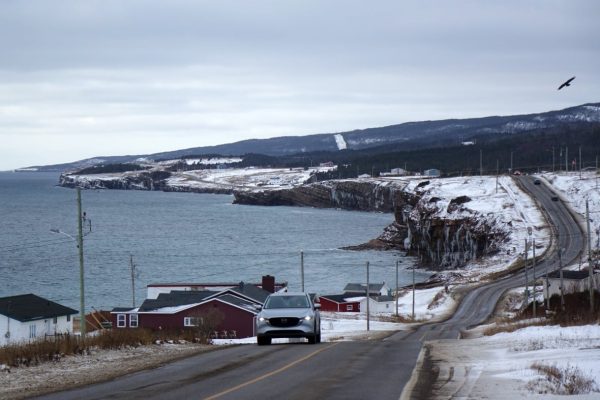
The town of Campbell’s Creek on the Port au Port Peninsula in western Newfoundland. (Patrick Butler/Radio-Canada)
“Communities really don’t like feeling like the decision’s already been made for them,” said Louis-Charles Vaillancourt, a researcher with the Conservation Council of New Brunswick who has studied wind projects and the impacts of failed consultations processes.
“The community says to itself, ‘I don’t really have any power, I don’t have any influence on the project and on how it’s going to be constructed,’ and that takes away any chance of building trust.”
For months, John Risley said, his company has done all it can to listen and respond to concerns. World Energy set up a community engagement office in Stephenville. It regularly sends out email and social media updates on the project. Company representatives have attended community meetings and fielded questions.
“Does that mean that we’re satisfying everybody? No, but I don’t think we’re ever going to be able to do that. I think our job is to be doing exactly what we are doing and to do that right throughout the entire project,” Risley said.
“Any project of this scale is inevitably going to engender a degree of opposition. Either it’s ‘I don’t want it in my backyard’ or ‘I don’t want it here’ or ‘I don’t like the sound of it’ or ‘I don’t want any change.’ We’re sympathetic to that, it’s not unreasonable. … On the other hand, I would say all economic activity of any sort brings change with it.”
‘Extremely ambitious’ timeline
Vaillancourt said companies can rebuild trust once it’s been lost, but “the proponent has to be willing … to slow down the project and include the population.”
But World Energy is showing no signs of slowing down and aims to begin production in 2025.
That timeline is “extremely ambitious and hard to believe,” said Nick Mercer, a postdoctoral researcher at Dalhousie University, who added there hasn’t been a wind farm constructed in Newfoundland for more than a decade. “Where are these trained professionals [coming from]?”
Risley rejected that criticism.
“As soon as we have one turbine and one electrolyzer operating we will be making hydrogen. So when we say 2025, that’s first hydrogen, but the project won’t be complete until a couple of years after that.”
Other experts have also questioned the project’s financial viability, even if European countries like Germany are willing to pay a premium to reduce their dependence on Russian gas.
“Making green hydrogen cheaply is hard to do with just wind,” said Paul Martin, a chemical engineer and founder of the Hydrogen Science Coalition, a group of engineers, academics and scientists that aims to “bring an evidence-based viewpoint to the heart of the hydrogen discussion,” according to the group’s website.
He added that winds can’t blow all the time and the Stephenville plant’s electrolyzer therefore won’t be able to run consistently at full capacity without an additional source of green energy.
Martin also said the vast majority of the wind energy produced on the Port au Port Peninsula will be lost during the conversion processes needed to make hydrogen from water and then ammonia from hydrogen. At each step in the process, energy is consumed, making the final product more expensive, Martin said. Will the Germans wake up to the cost and look elsewhere?
“I think that’s certain,” Martin said, adding he’s frustrated with the hype over green hydrogen as a renewable energy source.
Risley said energy is lost during conversion, but not enough to shelf the project. He said Germany is hungry for stable green energy sources and ready to pay, especially given the skyrocketing electricity prices in that country since the Russian invasion of Ukraine.
He said a final investment decision on the project will come in September.
This article is the work of the source indicated. Any opinions expressed in it are not necessarily those of National Wind Watch.
The copyright of this article resides with the author or publisher indicated. As part of its noncommercial educational effort to present the environmental, social, scientific, and economic issues of large-scale wind power development to a global audience seeking such information, National Wind Watch endeavors to observe “fair use” as provided for in section 107 of U.S. Copyright Law and similar “fair dealing” provisions of the copyright laws of other nations. Send requests to excerpt, general inquiries, and comments via e-mail.
| Wind Watch relies entirely on User Contributions |
 (via Stripe) |
 (via Paypal) |
Share:

